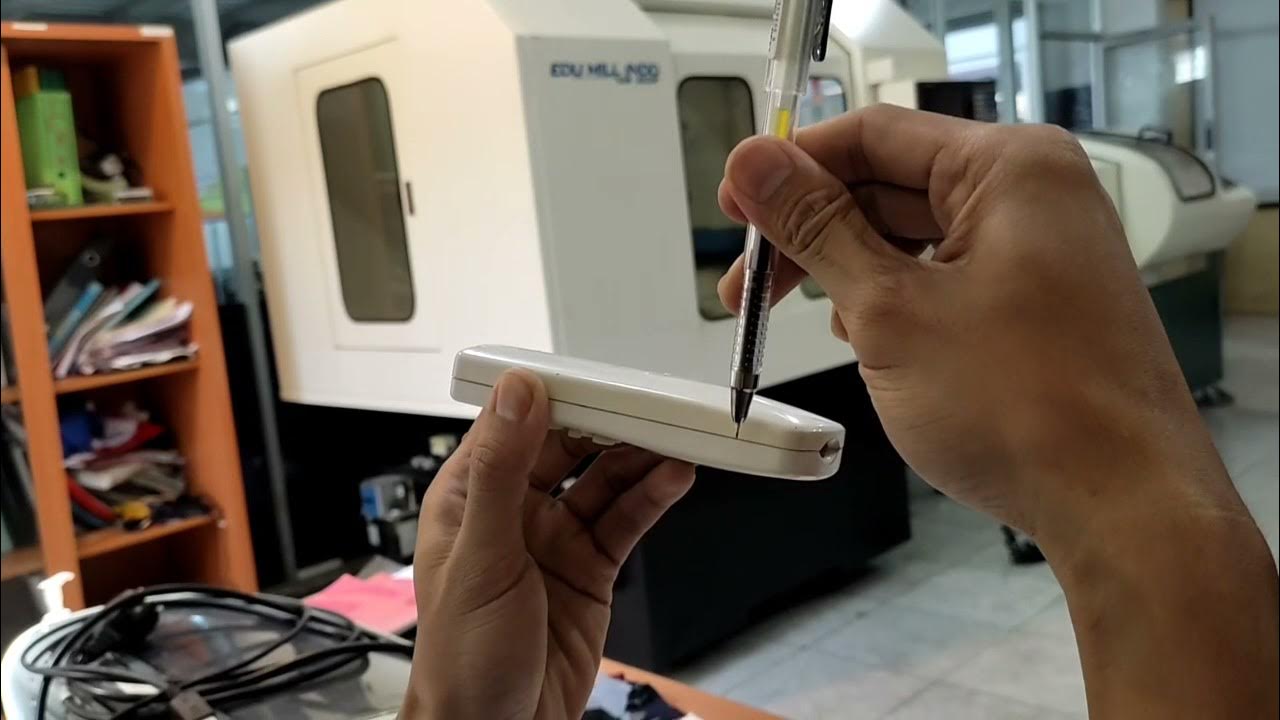How to perfect cross halving
Summary
TLDRThis woodworking tutorial demonstrates how to create a precise cross-handle joint. The process involves cutting timber at both ends to form a cross, followed by careful measurements and marking with a tri-square. A marking gauge is used to ensure consistency, and a tenon saw makes the initial cuts. The tutorial emphasizes careful chiseling to refine the cuts and achieve a clean, smooth finish. The final step ensures both parts fit together perfectly, forming a square, cross-handle joint. This method highlights precision and patience for a professional result.
Takeaways
- 😀 Mark halfway down the piece of timber and measure 10mm on each side for accuracy.
- 😀 Use a tri-square to mark precise lines over the measured points to guide the cuts.
- 😀 Ensure the lines are matched on both the side and top of the timber for consistency.
- 😀 Use a marking gauge to set the correct depth (35mm) for cutting into the timber.
- 😀 Draw across the lines carefully with a marking gauge, ensuring no lines go past the set measurements.
- 😀 Secure the timber in a vise and use a tenon saw to cut along the marked lines carefully.
- 😀 When cutting, make sure not to go past the lines to avoid errors in the shape of the cross.
- 😀 Use a chisel that is slightly smaller than the width of the cuts to cleanly remove excess material.
- 😀 Pare out gently with the chisel, ensuring the timber stays smooth and level without bumps.
- 😀 Check the finished piece for square alignment to confirm the accuracy of the crosscut.
- 😀 After completing both halves, assemble them to form a finished cross-having, ensuring everything is even and aligned.
Q & A
What is the first step in creating a cross halving joint?
-The first step is to cut halfway down the piece of timber on both sides to create the two ends of the joint.
How do you ensure that the cuts align correctly for the cross halving joint?
-To ensure alignment, measure halfway down the timber, then mark 10mm on either side of the center. Use a tri square to run lines exactly over the measurements to ensure accuracy.
What tool is used to mark lines across the timber after measuring?
-A tri square is used to run lines across the timber to ensure precision in the cuts.
How do you ensure the marking lines match on both sides of the timber?
-Make sure the lines on the top of the timber align with the ones on the side. Carefully run the line through, ensuring both sides match.
What is the purpose of using a marking gauge in the process?
-A marking gauge is used to mark a consistent depth halfway into the timber. It ensures accurate depth when making the cuts.
How do you adjust the marking gauge for accurate measurements?
-The marking gauge needs to be adjusted to 35mm, then you check it to ensure it is correct. Once adjusted, you draw the marking line across both sides of the timber.
What is the importance of controlling the depth of the cut with a chisel?
-Controlling the depth of the cut with a chisel is important to ensure a precise fit for the cross halving joint. It ensures the joint is clean and smooth without cutting too deeply.
Why should you be cautious not to go past the lines when sawing and chiseling?
-Being cautious not to go past the lines ensures that the joint remains exact and fits tightly when assembled. Any mistakes could affect the overall quality of the joint.
What role does a tenon saw play in making the cross halving joint?
-The tenon saw is used to make precise cuts along the marked lines. It ensures the cuts are straight and accurate, allowing for a clean joint.
What is the final check after assembling the cross halving joint?
-The final check is to ensure that the joint is square. Once the two halves are put together, it’s important to verify that the cross is evenly aligned and square.
Outlines

This section is available to paid users only. Please upgrade to access this part.
Upgrade NowMindmap

This section is available to paid users only. Please upgrade to access this part.
Upgrade NowKeywords

This section is available to paid users only. Please upgrade to access this part.
Upgrade NowHighlights

This section is available to paid users only. Please upgrade to access this part.
Upgrade NowTranscripts

This section is available to paid users only. Please upgrade to access this part.
Upgrade Now5.0 / 5 (0 votes)





